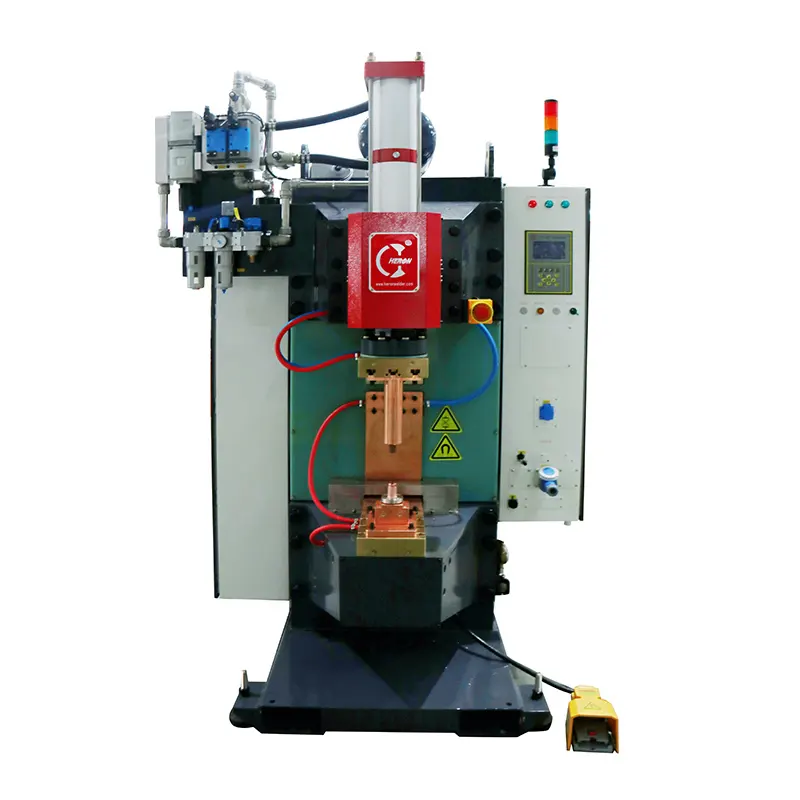How can welding without deformation?
Methods to prevent and reduce welding deformation must consider the welding process design and overcome the changes in hot and cold cycles during welding. Shrinkage cannot be eliminated, but it can be controlled. The ways to reduce shrinkage deformation are as follows.
1. Do not over-solder
The more metal filling will produce greater deformation force at the welding point. Correctly determining the weld size can not only obtain smaller welding deformation, but also save welding materials and time. The amount of welding metal filling the weld should be minimum, and the welding The seam should be flat or slightly convex. Excessive welding metal will not increase the strength. Instead, it will increase the shrinkage force and increase the welding deformation.
2. Interrupted welds
Another way to reduce the amount of weld filling is to use more intermittent welding. For example, welding reinforcement plates, intermittent welding can reduce the amount of weld filling by 75%, while also ensuring the required strength.
3. Reduce weld beads
Use thick welding wire. Welding with fewer welding passes is better than using thin welding wire. Welding deformation with multiple welding passes is smaller. When there are multiple welding passes, the shrinkage caused by each welding pass cumulatively increases the total shrinkage of the weld. Fewer welding passes. The welding process with thicker electrodes is better than using more welding wires. The welding process of welding beads and thin electrodes has better effect. Note: Use thick welding wire, less welding pass welding or thin welding wire. The welding process of multiple welding passes depends on the material. Generally, low carbon steel, 16Mn and other materials are suitable for thick welding wire. Less welding Pass welding, stainless steel, high carbon steel and other materials are suitable for fine welding wire. Multi-pass welding.
4. Anti-deformation technology
Before welding, the parts are pre-bent or tilted in the opposite direction of the welding deformation (except for overhead welding or vertical welding). The preset amount of reverse deformation needs to be determined through testing. Pre-bending, pre-setting or pre-arching welded parts use reverse machinery. force, a simple method to offset welding stress. When the workpiece is preset, deformation occurs that causes the shrinkage stress of the workpiece and the weld to be opposite. The preset deformation before welding and the post-weld deformation cancel each other out, making the welded workpiece an ideal plane.
Another common method of balancing shrinkage forces is to place identical welded workpieces opposite each other and clamp them. This method can also be used for pre-bending, by placing wedges in the appropriate position on the workpiece before clamping.
Special heavy-duty welding workpieces can produce the required balancing force due to their own rigidity or the mutual position of the parts. If these balancing forces are not generated, other methods need to be used to balance the shrinkage force of the welding material to achieve the purpose of canceling each other out. The balancing force can It is other shrinkage forces. The mechanical restraint force formed by the use of tooling fixtures. The restraint force formed by the assembly and welding sequence of components. The restraint force formed by gravity.
5.Welding sequence
Determine a reasonable assembly sequence according to the structural form of the workpiece, so that the workpiece structure shrinks at the same position. Make double-sided grooves in the center and axis of the workpiece, use multi-layer welding, and determine the double-sided welding sequence. Use discontinuities in fillet welds During welding, the shrinkage in the first pass of welding is balanced by the shrinkage in the second pass of welding. The tooling fixture can fix the workpiece at the required position, increase rigidity, and reduce welding deformation. This method is widely used for small workpieces or small components. Welding, due to the increased welding stress, is only suitable for low carbon steel structures with good plasticity.
6. Remove shrinkage force after welding
Knocking is a method to counteract the shrinkage force of the weld, just like the weld is cooling. Knocking will make the weld stretch and become thinner, thereby eliminating stress (elastic deformation). However, when using this method, care must be taken that the weld The root cannot be tapped, as cracks may occur during tapping. Generally, tapping cannot be used on the cap weld bead.
Because the cover layer may have weld cracks, which will affect the weld detection and produce a hardening effect. Therefore, the utilization of the technology is limited, and there are even examples that require weld bead tapping only within the multi-layer weld bead (primer weld and (Excluding cover welding) tapping to solve the problem of deformation or cracks. Heat treatment is also one of the methods to remove shrinkage force, controlling the high temperature and cooling of the workpiece; sometimes the same workpiece is clamped back to back. Welding, using this alignment condition to eliminate stress, Minimize residual stress in the workpiece.
7. Reduce welding time
Heating and cooling are generated during welding, and time is also required to transmit heat. Therefore, the time factor also affects deformation. Generally, it is hoped that the welding of large workpieces will be completed as soon as possible before thermal expansion. The welding process, such as the type and size of the welding rod, and the welding current. Welding speed, etc. affect the degree of shrinkage and deformation of the welded workpiece. The use of mechanized welding equipment reduces the welding time and the amount of deformation caused by heat.
Contact Person: Christina Liu
Tel: 86 20 87813325 / 86 20 87819588 / 86 20 87815075
Fax: 86 20 87813346
Address: No.63 Xin Yi Road, Guangzhou, Guangdong China 510990














